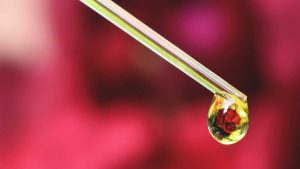What is microdosing and what’s all the fuss about?
Most people have dealt with some type of professional or personal block at some point in their life. You may have struggled to develop that unique stance or point of view that brings new understanding or a new perspective to a complex or perplexing issue. You may have labored to create that novel pitch, or jingle, or logo, or wrestled with finding inspiration for a new campaign. There is certainly no shortage of seminars and conferences that supposedly address these issues of creativity, or lack thereof.
Alternately, in your personal life, you might have felt trapped in a rut with your relationships, perhaps mired in outdated or counterproductive behavioral or communication patterns. The shelves of bookstores, and the virtual pages of Amazon are replete with self-help books that tackle these problems.
But people often feel, ironically, overwhelmed with the choices presented to them. (Do I read the traditional tomes, The 7 Habits of Highly Effective People, or Good to Great, or jump on the innovation train and plunge into Create the Future + the Innovation Handbook: Tactics for Disruptive Thinking ? I jokingly tell family and friends I am going to write the book The Dozen or So Habits, Thought Patterns, and Repeated Mistakes of Highly Ineffective People Guaranteed to Cause Frustrations, Delays and a Sense of General Malaise, informed by personal journey.
Ultimately, it’s an issue with accessing fresh reservoirs of creativity, which requires a shift in consciousness, a process that can take a long time. And despite our best efforts, people are just consumed with the day-to-day responsibilities of life to overcome our intellectual inertia. As Jim Gaffgan put it so eloquently, “You ever read a book that changed your life? Me neither.” But what if there was something you could do to speed up this process, a cognitive shortcut, if you will?

There may just be one, in the form of microdosing. (I want to be transparent about this concept. I have never microsdosed, don’t know if I ever will, and am in no way recommending anyone engage in microdosing. This is simply an philosophical exploration on my part. And though it may seem obvious, most psychedelic substances are illegal according to federal laws, so people should always proceed with caution.).
According to the Harm Reduction Journal, microdosing is “the practice of consuming very low, sub-hallucinogenic doses [1/10 or less the typical dose] of a psychedelic substance, such as lysergic acid diethylamide (LSD) or psilocybin-containing mushrooms.” And although there needs to be much more formal research, the general thrust of anecdotal (and some experimental) information points to a number of potential benefits, including improvements in mood, focus, creativity, energy levels, social and interpersonal connectedness, and even self-efficacy, while also decreasing symptoms associated with anxiety and depression. So, what do we actually know?
In one double-blind, placebo-controlled, within-subject design experiment “24 healthy recreational psychedelic drug users (12 males; 12 females), aged 22.8 years on average” were administered either microdoses of LSD or a placebo in a controlled lab setting. (Because it was double-blind design, neither the participants nor the administrators knew if they were receiving or giving LSD or the placebo.) Participants were then assessed on a number of cognitive tasks and were also asked to self-assess their mood states using a variety of scaled instruments. The conclusions were a mixed bag:
COGNITION AND MICRODOSING
The researchers concluded that “Low doses of LSD can enhance attention in the majority of observations, which is in line with anecdotal reports. However, LSD reduced the speed of information processing of the DSST [Digit Symbol Substitution Test], a task requiring higher level of cognitive processes compared to for instance the PVT [Psychomotor Vigilance Task].”
MOOD AND MICRODOSING
The researchers found that “LSD increased positive mood (20mcg) but also induced unwanted effects such as increased anxiety (5 and 20 mcg), or confusion (10 mcg) in the majority of observations. Both positive and negative effects are in line with anecdotal reports and related to respectively the motivation to start and stop microdosing (Anderson et al., 2019; Hutten et al., 2019; Lea et al., 2019).”
CONCENTRATION AND MICRODOSING
The researchers concluded “In contrast to anecdotal reports (Glatter, 2015;Lea et al., 2019), the present study shows a decrease in self-rated concentration (20 mcg).” Interestingly, the researchers also found a discrepancy between the subjective reporting of participants, and their assessments on more objective assessments, stating, “These findings demonstrate the interesting dissociation between objective task performance, which was enhanced on the PVT in 74% of the observations, while the subjective experience showed that 63% of the observations rated performance deterioration.”
INDIVIDUAL VARIATION AND MICRODOSING
One of the key and consistent findings of the researchers was the variability associated with each individual participant. Here, the researchers found “While no main dose effects were demonstrated on sustained attention and mood, findings showed there was an individual component in the LSD effect, meaning that not all participants demonstrated the cognitive and subjective effects to the same extent.
There is also a lack of meta analysis with regard to microdosing. However, in one systematic review of the available literature, the authors found that “While the available evidence has some strengths (e.g. large sample sizes, robust methodologies) there are also remarkable limitations (e.g. gender bias, heterogeneity of dosing schedules and drugs used). Highly contradictory results have been found, showing both the benefits and detriments of microdosing in terms of mood, creative processes, and energy, among other regards. This review provides a general overview of the methods and approaches used, which could be useful for improving future studies.”
As it stands, there is a lack of a robust pool of information and data based on well-constructed, tightly designed, peer-reviewed experimental studies, so any conclusions drawn, be they positive or negative, should be tentative in nature. However, the very nature of the subjective experience intimately tied to using psychedelics is a challenging conundrum for researchers because in constructing and administering experiments, we are trying to objectify and quantify an inherently qualitative and subjective endeavor.
As one qualitative analysis concluded, “The outcomes of microdosing varied widely between strong endorsement of the practice and disappointment at the lack of effect. Meta-commentary included warning against overexcitement with the practice. We couch our findings in meaning-making theory and propose that, even at low doses, psychedelic substances can provide a sense of meaning currently lacking in Western culture.”
This does not mean that I advocate for less rigorous experimental studies, but that first, this process will take some time, as the wheels of science, much like justice, grind exceeding slow and small, and second, if the goal is to grapple with ontological or existential meanings of life, these facets may beyond the capacity of current scientific experimentation parameters. As Thomas Wolfe wrote in The Electric Kool-Aid Acid Test, “Man has become so rational, so utilitarian, that the trickle becomes most pale and thin. It is efficient, for mere survival, but it screens out the most wondrous parts of man’s potential experience without his even knowing it.”
Yet, all one has to do is look at the number of psychedelic stocks available to know that the future looks bright for psychedelic research. Ultimately, I believe we will use psychedelics to unlock not only inherent human potentials, but to heal those suffering from a host of mental-health issues that have stubbornly resisted current treatments.
The key to it all is to have an informed and simultaneously open mind, and understand what works or does not work for you as an individual. As R. Buckminster Fuller said, “You never change things by fighting the existing reality. To change something, build a new model that makes the existing model obsolete.” From this vantage point, microdosing is a collective as well as individual phenomenon.






